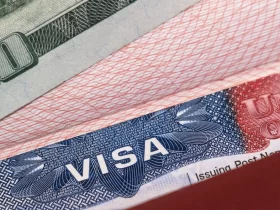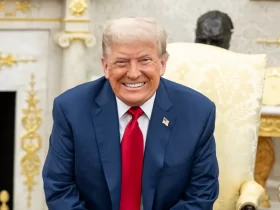For millions of families, one of the most cherished symbols of Christmas is the tree decorated with lights and ornaments. However, behind this seemingly unbreakable tradition lies a growing problem: trade tensions between the United States and China have jeopardized the supply of artificial trees, toys, and decorations. Major retailers such as Walmart, Home Depot, and Amazon are already preparing for a holiday season marked by lower inventory and higher prices, a direct consequence of tariffs on Chinese imports.
A season planned since summer
Although December is still six months away, US companies begin planning their Christmas logistics in the middle of summer. Seasonal products require four to six months of manufacturing, packaging, and shipping, which means orders must be placed well in advance. Under normal conditions, this process ensures that shelves are ready for the busiest shopping season of the year.
However, the imposition of tariffs on imports from China has disrupted that schedule. The recent 90-day extension agreed between Washington and Beijing provides a brief respite, allowing some last-minute shipments to cross the Pacific. But in practice, many retailers had already made their purchasing decisions prior to the agreement, limiting the positive impact of this extension.
China’s dependence on the Christmas industry

The magnitude of the challenge is explained in figures: according to the US International Trade Commission, 87% of imported artificial trees and decorations come from China, with a value of nearly $4 billion. In the case of toys, the dependence is similar: almost 80% of production destined for the US market is manufactured in China.
This concentration means that any change in tariffs has an immediate effect on costs and product availability. As a result, companies such as National Tree Company—a supplier to Walmart, Home Depot, and Amazon—have already announced increases of between 10% and 20% on items such as Carolina pines, Nordic spruces, and Dunhill spruces.
Direct impact on prices and supply

For consumers, the outlook is clear: there will be fewer options and prices will be higher. The shortage is not limited to artificial trees, but also affects toys, lights, garlands, and other seasonal items. In response to this situation, some retailers are reducing their orders to avoid costly inventories that could remain unsold, while others are adjusting their logistics and prioritizing direct-to-consumer shipments rather than stockpiling large quantities.
Tension in the toy sector
Tariffs have hit the toy industry hard, whose dependence on the Christmas season is critical. Many companies are considering slowing down orders or even closing down, as higher import costs are jeopardizing their profitability. Recent surveys show that more than half of small companies have canceled purchase orders, and a significant number warn that they could leave the market if taxes remain in place.
The retail side
Independent businesses are also facing difficulties. In several cities, stores are warning that they may not have enough merchandise for December and that, even if they do, it will cost much more than last year, affecting their sales. The price increase threatens to reduce demand and, in extreme cases, lead to the closure of establishments that depend almost entirely on the holiday season to sustain themselves throughout the year.
Consumer preferences
Uncertainty about supply and prices comes at a time when consumers have shown a strong preference for artificial trees. In the United States, nearly half of adults choose this option, compared to less than a quarter who prefer natural trees. In countries such as Mexico, Brazil, and the United Kingdom, the trend toward synthetic trees is even more pronounced, with more than 60% preference.
This cultural shift toward convenience and reuse makes supply issues even more significant: any logistical or tariff imbalance directly impacts the Christmas traditions of millions of households.
An uncertain Christmas
The holiday season is vital for retailers. Not only does it represent the peak sales period, but it is also an emotional time for families seeking to maintain their traditions. However, trade tensions have made Christmas an unexpected victim of the tariff war.
While some business owners remain hopeful that the US government will soften its stance or grant longer extensions, the immediate outlook points to a Christmas with fewer options and higher prices. For consumers, the message is clear: shopping early may be the only way to secure a tree and the toys underneath it.






































Leave a Reply